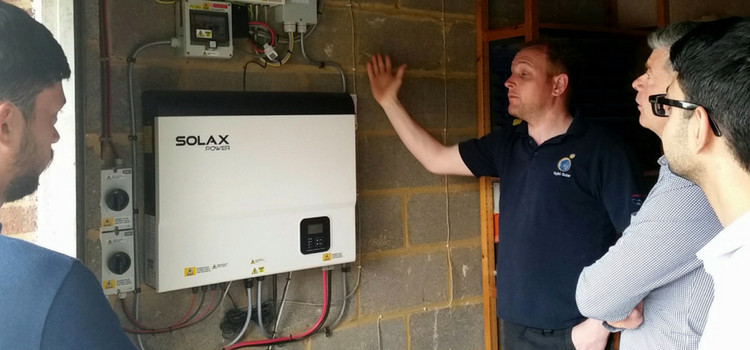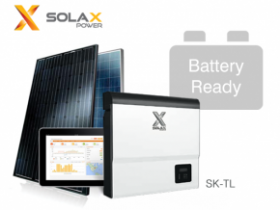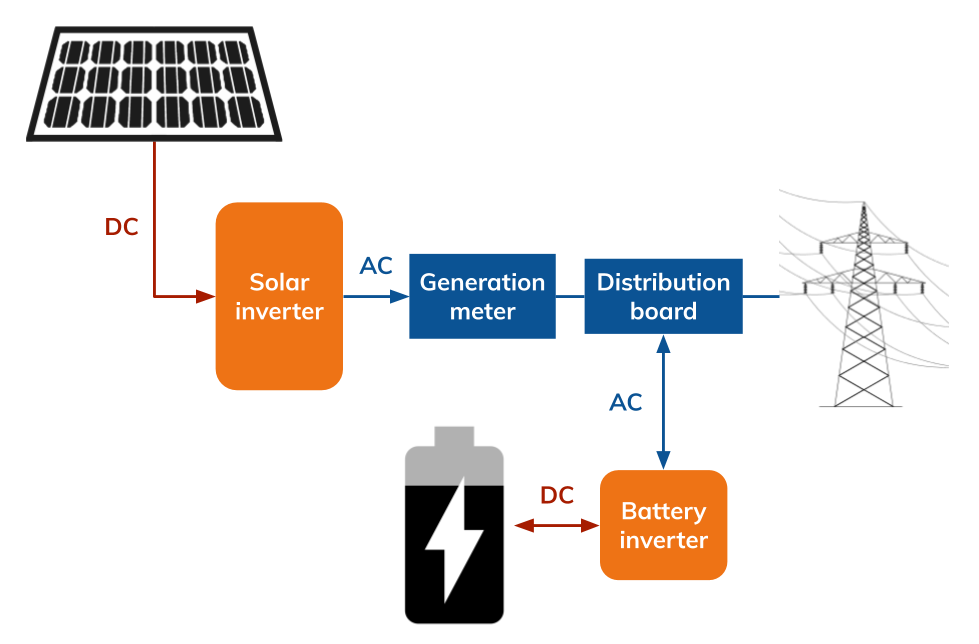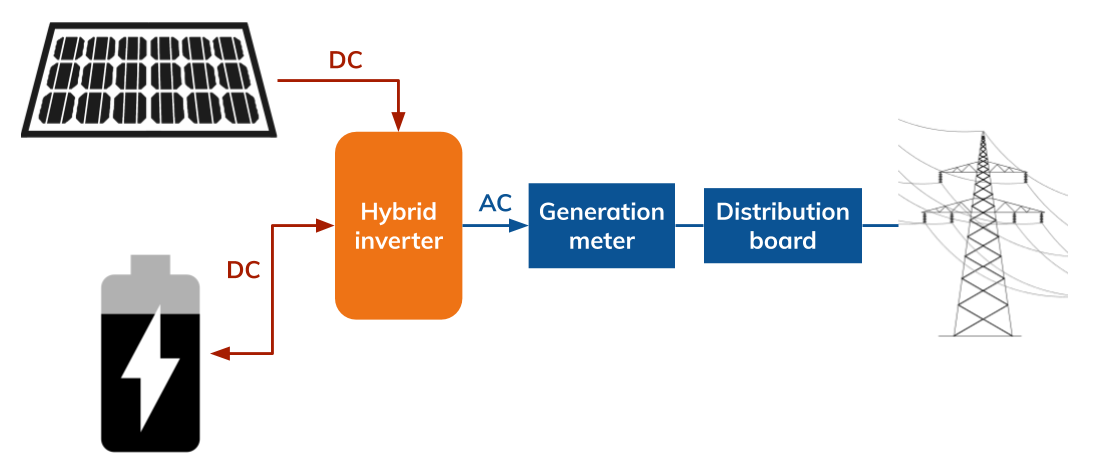

The battery is connected to the electrics in the property using an inverter / charger.
The charger controls the electricity flowing to the battery during the recharging phase. It provides a charge profile appropriate to the battery size and type, in particular controlling voltage and current, and adjusting the charge profile to suit the battery cell temperature.
A DC charge controller is used as a direct interface between a DC source (such as a solar array) and the battery. It converts the variable DC input voltage to the precise required DC charge voltage.
An AC charger provides a DC charge from an AC source (e.g. the mains grid, or AC supplied by the solar PV inverter).
An inverter-charger can work as an AC charger when charging the battery (from an AC source), and as an inverter to invert the battery charge from DC back to AC when taking DC power out of the battery.
Batteries are charged with DC electricity. PV systems generate DC electricity, which has to be converted to AC electricity by the PV inverter.
There are two ways of coupling the battery system to the PV system / electricity network:


Note that with DC coupling, the generation meter which measures 'generation' by the PV system for tariff purposes is installed after the DC / AC Inverter, and thus after the battery. The total generation will be reduced by the round-trip storage losses incurred in respect of any energy which is stored in the battery (typically by 10- 15%). This will reduce the overall tariff payable on the system.
Thus where there is a high Feed-in Tariff applying to a system (certainly applies for any system installed in the UK prior to any 2016 tariff cut), it can make more financial sense to retrofit an AC coupled system rather than a DC coupled system.
For new systems which do not attract a high tariff (or indeed any Feed-in Tariff), DC coupling is likely to be superior because it reduces the number of AC/DC inversions, thus reducing the AC/DC inverter losses.
For more information call us on 0118 951 4490 or download our free guide to storage:
Copyright © Spirit Energy 2026 · info@spiritenergy.co.uk · 0118 951 4490
Jobs and Careers
Interested in joining the Spirit team? Email jobs@spiritenergy.co.uk
Spirit House, 25 Albury Close, Reading, RG30 1BD
(Location formerly known as 44 Portman Road, Reading, RG30 1EA)
Spirit Energy is the trading name of Spirit Solar Ltd · UK Company Number 07138647
Although care is taken to ensure that the information on our website (www.spiritenergy.co.uk) and any guides, calculators or checklists provided by us, electronically or otherwise, are accurate and up-to-date, we cannot accept any responsibility for mistakes or omissions. We enter into no express or implied conditions, warranties, terms or representations regarding the quality, accuracy or completeness of the information. We exclude to the extent lawfully permitted all liability for loss or damage, whether direct, indirect or consequential arising out of your use of our website or any guides, calculators or checklists provided by us, or from any information or omission contained in our website or any guides, calculators or checklists provided by us.